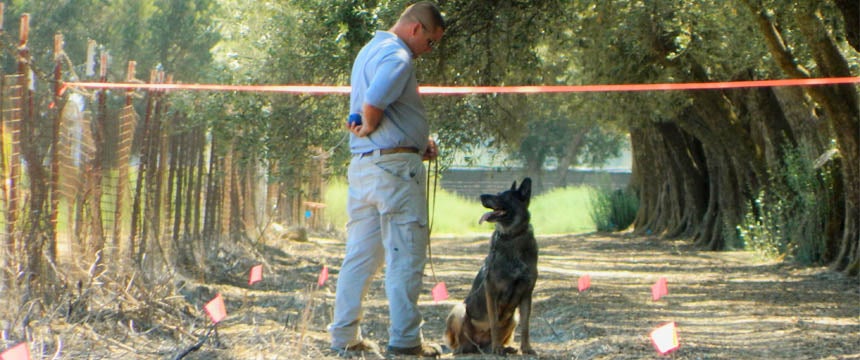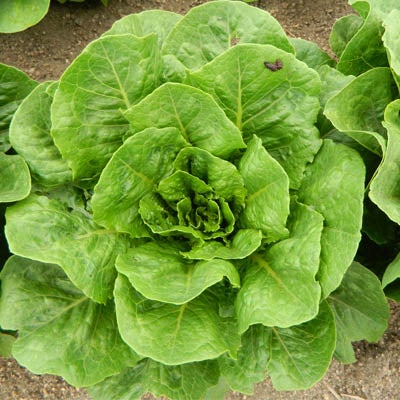We’ve all heard of simple and effective ways to decrease the risk of eating contaminated food:
- Wash your hands when preparing food.
- Wash your produce before using it (especially with a mild detergent like a dish soap solution).
- Separate your cutting boards for meat from your cutting boards for produce.
- Get your dog to sniff around?
The first three steps are the best measures that we can all take at home to prevent foodborne illness. The last was a theory that scientists of epidemiology and disease decided to test as they searched for information to boost food safety at the industrial scale.
Melissa Partyka, an ecologist at the UC Davis Western Institute for Food Safety and Security, found from her studies with colleagues that using scent-detection dogs to help prevent contaminated produce from reaching markets (then our mouths) isn’t a magic bullet. The dogs did serve well as a primary screening tool in some scenarios, especially when rates of contamination were very low. They weren’t as effective at detecting very small instances of contamination — like a single mouse poop — or when being bored. Dogs trained to detect scents are intelligent and hard-working, but they have a hard time, studies show, switching their targets from drugs or explosives, for instance, to feces. The helpers, it turns out, have more potential in high-risk environments or when a product's inspection will include other detection tools as well.

I Spy with My Little Eye...
Fresh foods need to be screened because “we cannot possibly test every portion of every commodity for every pathogen,” says Partyka. She explains: “One, this would leave no commodity for the shelves, and two, even if we could test a product without destroying it, many commodities have too short of a shelf-life” to sit around for a series of examinations.

Instead of our pets, we should put our eyes to work. In addition to washing hands, produce and food preparation surfaces, we should take time to look at the produce we bring home to feed our families. Workers in farm fields and processing plants do it every day. Partyka has talked with dozens of them who were trained to carefully inspect produce for the dirt and debris that can contain feces.
Yet we know that even after visual scrutiny, produce can be unsafe. Viruses and bacteria, like Norovirus, Salmonella, and many more, can be present on our foods and that they can cause infections that lead to illness and even death.
The Dangerous Combination
When a perfect storm of three conditions occurs, then a virus or bacteria can cause illness.
- First, the virus or bacteria must have the capacity to infect a host. Called virulence or pathogenicity, this capacity is highly variable even within an organism and depends on variation in the presence and function of specific genes.
- Second, the consumer must be susceptible to infection. This has to do with our immune systems.
- Third, a sufficient dose of the virus or bacteria must be consumed. Different pathogens require different doses to cause infection, and, as with most illnesses, not everyone will get sick when exposed to the same dose.
Not every human contact with contaminated produce creates an outbreak that the nightly news covers. While the US Centers for Disease Control and Prevention considers instances involving two or more cases with the same exposure an outbreak, Partyka says “it is only when an outbreak stems from a widely distributed product or has resulted in high incidences of hospitalization or death that we, the public, are made aware of it.”
Living with Risk and Letting Science Step Up
For many health reasons, though, you don’t want to skip on fruits and vegetables in your diet. This means you’ll likely be exposed to contaminants at some time at some level. It’s a conundrum we face every day, one that the agricultural industry and health professionals can’t easily solve. Here science is especially valuable.
Scientific studies are approaching this issue of exposure from multiple angles. The work includes compiling years of outbreak data, working with agricultural and manufacturing regulators, improving detection tests (mostly without dogs), and pinpointing the infectious dose at which 50% of people exposed will develop an infection. Research for ID50, as this last one is commonly called, requires human subjects who are willing to ingest specific doses of viruses or bacteria for scientists to monitor symptoms. “As you can imagine,” Partyka says, “finding subjects willing to experience painful bouts of diarrhea for the betterment of science is no easy task.”
The betterment of science — to keep our food safe and our food supply secure — is the vision of researchers like Partyka and others at WIFSS. But perhaps not that of their canine colleagues.
“If your dog takes an interest in your salad, throw her a bite!” Partyka insists. Her dog favors cucumbers, carrots and tomatoes. “Unless your dog is a trained fecal detection dog, like the ones used in our studies, it is highly improbable that she is looking for anything other than a snack.”
Related:
- 5 Food-Safety Tips for Healthy Outdoor Grilling
- Watch What You Eat, Scientifically
- How to Raise Backyard Chickens
- A Focus on World Food in One Health Education
Amy Whitcomb is an editor on the web team in Strategic Communications.